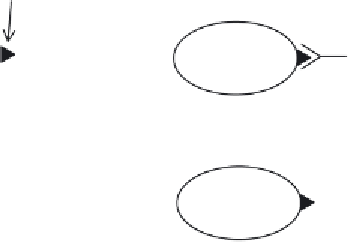Biomedical Engineering Reference
In-Depth Information
libraries will generate a lower number of positive clones, they can be screened against multiple anti-
gens. Such native non-immune libraries can also be the starting point for the generation of so-called
synthetic immune libraries. Their generation entails initial
in vitro
engineering of the non-immune
library of antibody genes in order to increase still further the level of antibody diversity generated.
13.3.2 Therapeutic application of monoclonal antibodies
The unrivalled specifi city of monoclonal antibodies, coupled to their relatively straightforward
production and their continuity of supply, renders them attractive biochemical tools. Therapeu-
tically, they represent by far the single largest category of biopharmaceutical substances under
investigation. Several hundred such preparations are currently undergoing preclinical and clinical
trials. Throughout the 1980s the focus of attention rested upon their use either as
in vivo
imaging
(i.e. diagnostic) agents or as direct therapeutic agents. Initial studies centred mainly around cancer,
but monoclonal antibody preparations are now used in a variety of other medical circumstances:
•
induction of passive immunity;
•
diagnostic imagining;
•
therapeutically (e.g. treatment of cancer, transplantation and cardiovascular disease).
All
in vivo
diagnostic/therapeutic applications are dependent upon the selective interaction of a
monoclonal antibody with a specifi c target cell type in the body (e.g. a cancer cell). Therefore, a
prerequisite to application of monoclonal antibody-based products in this way is the identifi cation
of a cell surface antigen unique to the target cell type (Figure 13.3). Once identifi ed and character-
ized, monoclonal antibodies may be raised against that unique surface antigen (USA or USAg).
USA
Target cell
Target cell
(a)
(b)
Target cell
Radioisotope
Target cell
Drug/toxin
(d)
(c)
Figure 13.3
Underlying principle/approaches taken during the development and use of antibody-mediated
target cell detection/destruction. A prerequisite for adoption of this strategy is the identifi cation and char-
acterization of a surface antigen unique to the target cell type ('unique surface antigen', USA). Antibodies
raised against the USA should selectively interact with the target cell (b). In some instances the antibody is
chemically coupled to a radioactive tag (c), a drug or a toxin (d)




Search WWH ::

Custom Search